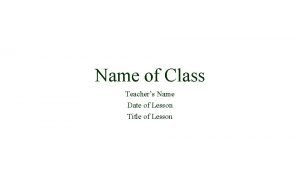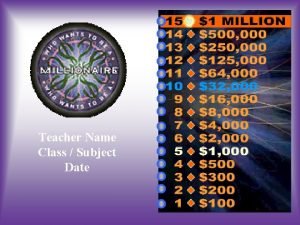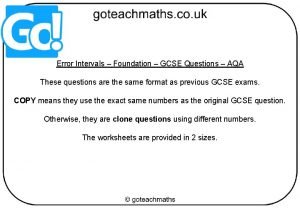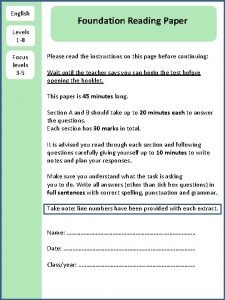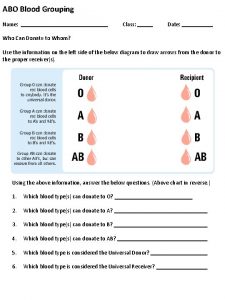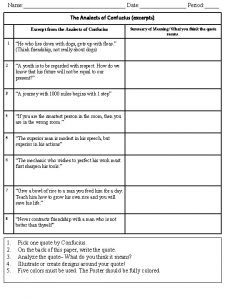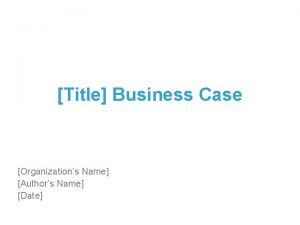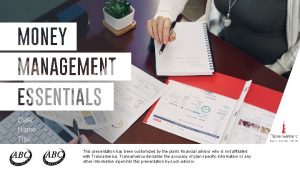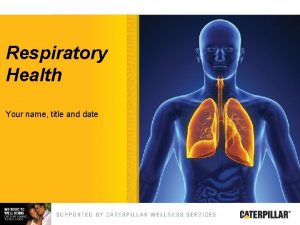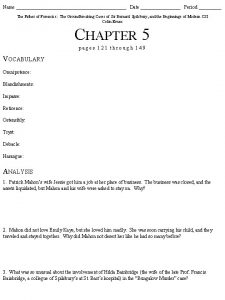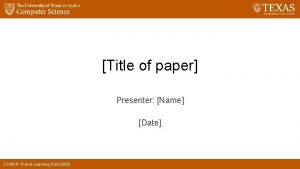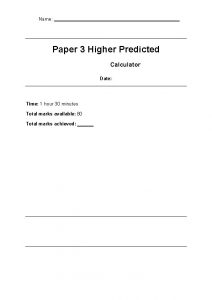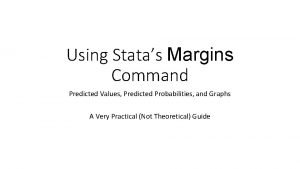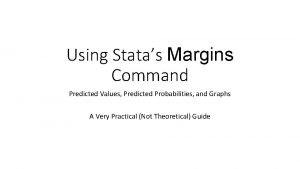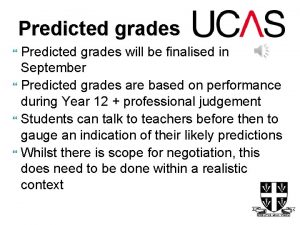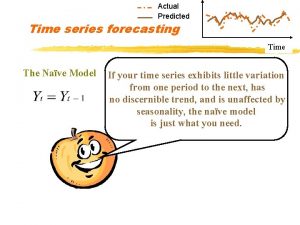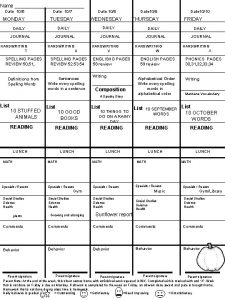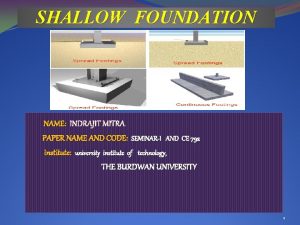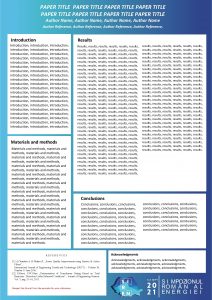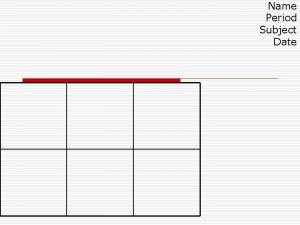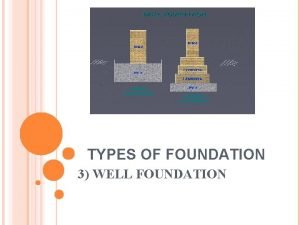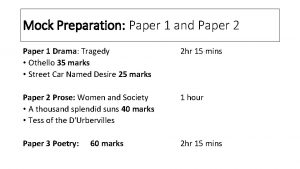Name Foundation Predicted Paper 3 Date Time 1









































- Slides: 41

Name: Foundation Predicted Paper 3 Date: Time: 1 hour 30 minutes Total marks available: 80 Total marks achieved:

Questions Q 1. Write down the value of the 3 in 16. 35 . . . . (Total for question is 1 mark) Q 2. Write 6819 to the nearest 1000 . . . . (Total for question = 1 mark) Q 3. Write 0. 19 as a fraction. . . . (Total for question = 1 mark) Q 4. (a) Write the following numbers in order. − 3 − 8 7 − 5 3 0 (1) (b) Write the following numbers in order. 0. 59 0. 5 0. 09 0. 95 0. 05 (1)

Questions Q 1. Write down the value of the 3 in 16. 35 . . . . (Total for question is 1 mark) Q 2. Write 6819 to the nearest 1000 7000. . . . (Total for question = 1 mark) Q 3. Write 0. 19 as a fraction. . . . . (Total for question = 1 mark) Q 4. (a) Write the following numbers in order. − 3 − 8 7 − 5 3 0 -8 -5 -3 0 3 7 (1) (b) Write the following numbers in order. 0. 59 0. 5 0. 09 0. 95 0. 05 0. 09 0. 59 0. 95 (1)

(c) Write down all the factors of 20 (2) (Total for question = 4 marks) Q 5. Here is a list of numbers 12 19 12 15 11 15 12 13 17 Find the median. . . . (Total for question = 2 marks) Q 6. Here is a trapezium. This diagram is accurately drawn. (a) Measure the length of the line PQ. . . . cm (1) (b) Measure the size of the angle marked x. . . . ° (1) (Total for question is 2 marks)

(c) Write down all the factors of 20 1 2 4 5 10 20 (2) (Total for question = 4 marks) Q 5. Here is a list of numbers 12 19 12 15 11 15 12 13 17 Find the median. 11 12 12 12 13 15 15 17 19 13. . . . (Total for question = 2 marks) Q 6. Here is a trapezium. This diagram is accurately drawn. (a) Measure the length of the line PQ. 8 cm. . . . cm (1) (b) Measure the size of the angle marked x. 35 . . . . ° (1) (Total for question is 2 marks)

Q 7. (a) Simplify c + c + c (1) (b) Simplify 6 × m × 5 (1) (c) Simplify 2 e × 3 f + 7 e − 5 f (2) (d) Expand simplify (x + 3)(x + 5) (2) (Total for question = 6 marks)

Q 7. (a) Simplify c + c + c 4 c (1) (b) Simplify 6 × m × 5 30 m (1) (c) Simplify 2 e × 3 f + 7 e − 5 f 6 ef + 7 e – 5 f (2) (d) Expand simplify (x + 3)(x + 5) x²+ 3 x+5 x+15 x²+8 x+15 (2) (Total for question = 6 marks)

Q 8. Noah buys coffee sachets to use in his coffee maker. There are 16 coffee sachets in a pack. A pack costs £ 3. 99 Noah uses 5 coffee sachets each day. Work out the minimum amount that Noah spends on coffee sachets in one year. (Total for question = 4 marks) Q 9. What percentage of this shape is shaded? . . . . % (Total for question is 3 marks)

Q 8. Noah buys coffee sachets to use in his coffee maker. There are 16 coffee sachets in a pack. A pack costs £ 3. 99 Noah uses 5 coffee sachets each day. Work out the minimum amount that Noah spends on coffee sachets in one year. 5× 365 = 1825 ÷ 16 =114 3. 99 × 114 = £ 458. 86 (Total for question = 4 marks) Q 9. What percentage of this shape is shaded? . . . . % (Total for question is 3 marks)

Q 10. A tin of varnish costs £ 15 A rectangular floor has dimensions 6 m by 11 m. The floor is going to be covered in varnish. Helen assumes that each tin of this varnish covers an area of 12 m 2. (a) Using Helen's assumption, work out the cost of buying the varnish for this floor. £. . . . (4) 2 Helen finds that each tin of varnish covers less than 12 m. (b) Explain how this might affect the number of tins she needs to buy. . . . . . . . . . . . . . . . . . (1) (Total for question = 5 marks) Q 11. (a) Solve 4 c + 5 = 11 c =. . . . (2)

Q 10. A tin of varnish costs £ 15 A rectangular floor has dimensions 6 m by 11 m. The floor is going to be covered in varnish. Helen assumes that each tin of this varnish covers an area of 12 m 2. (a) Using Helen's assumption, work out the cost of buying the varnish for this floor. 6 × 11 = 66 66 ÷ 12 = 5. 5 = 6 tins 6 × 15 = £ 90 £. . . . (4) 2 Helen finds that each tin of varnish covers less than 12 m. (b) Explain how this might affect the number of tins she needs to buy. . . . . . . . . She may need to buy more tins . . . . . . . . . (1) (Total for question = 5 marks) Q 11. (a) Solve 4 c + 5 = 11 4 c = 6 1. 5 c =. . . . (2)

(b) Solve 5(e + 7) = 20 e =. . . . (2) (c) Simplify (m 3)2 . . . . (1) (Total for question is 5 marks) Q 12. WXYZ is a quadrilateral. XYV is a straight line. (a) (i) Find the size of the angle marked a. . . . ° (ii) Give a reason for your answer. . . . . . . . . (2)

(b) Solve 5(e + 7) = 20 5 e + 35 = 20 5 e = -15 -3 e =. . . . (2) (c) Simplify (m 3)2 m⁶. . . . (1) (Total for question is 5 marks) Q 12. WXYZ is a quadrilateral. XYV is a straight line. (a) (i) Find the size of the angle marked a. 180 -147=33 . . . . ° (ii) Give a reason for your answer. Angles on a straight line add up to 180 . . . . . . . . . (2)

Angle ZWX = angle WXY (b) Work out the size of angle ZWX. . . . ° (2) (Total for question = 4 marks) Q 13. Describe the single transformation that maps shape A onto shape B. . . . . . . . . . . . . . . . . . (Total for question = 2 marks)

Angle ZWX = angle WXY (b) Work out the size of angle ZWX. 360 – 145 – 33 = 182 ÷ 2 = 91. . . . ° (2) (Total for question = 4 marks) Q 13. Describe the single transformation that maps shape A onto shape B. . . . . . . . . . . . . . . . . . (Total for question = 2 marks)

Q 14. The length of a car is 3. 6 metres. Karl makes a scale model of the car. He uses a scale of 1 cm to 30 cm. Work out the length of the scale model of the car. Give your answer in centimetres. . . . cm (Total for question is 2 marks) Q 15. Line L is drawn on the grid below. Find an equation for the straight line L. Give your answer in the form y = mx + c . . . . (Total for question is 3 marks)

Q 14. The length of a car is 3. 6 metres. Karl makes a scale model of the car. He uses a scale of 1 cm to 30 cm. Work out the length of the scale model of the car. Give your answer in centimetres. 3. 6× 100 = 360 ÷ 30 = 12 12 cm. . . . cm (Total for question is 2 marks) Q 15. Line L is drawn on the grid below. Y intercept is at 1 Find an equation for the straight line L. Give your answer in the form y = mx + c Gradient is 2 Y = 2 x + c Y = 2 x + 1. . . . (Total for question is 3 marks)

Q 16. Jayne writes down the following 3. 4 × 5. 3 = 180. 2 Without doing the exact calculation, explain why Jayne's answer cannot be correct. . . . . . . . . . . . . . . . . . (Total for question is 1 mark) Q 17. The diagram shows a trapezium ABCD and two identical semicircles. The centre of each semicircle is on DC. Work out the area of the shaded region. Give your answer correct to 3 significant figures. . . . cm 2 (Total for question = 4 marks)

Q 16. Jayne writes down the following 3. 4 × 5. 3 = 180. 2 Without doing the exact calculation, explain why Jayne's answer cannot be correct. . . . . . . . . My estimate is 3 × 5 = 15 which is far smaller than 180. 2 . . . . . . . . . (Total for question is 1 mark) Q 17. The diagram shows a trapezium ABCD and two identical semicircles. The centre of each semicircle is on DC. Work out the area of the shaded region. Give your answer correct to 3 significant figures. . . . . cm 2 (Total for question = 4 marks)

Q 18. The diagram shows the positions of two churches, A and B. Amber says, "The bearing of church B from church A is 025º" Amber is wrong. Explain why. . . . . . . . . . . . . . . . . . (Total for question = 1 mark) Q 19. There are 1200 students at a school. Kate is helping to organise a party. She is going to order pizza. Kate takes a sample of 60 of the students at the school. She asks each student to tell her one type of pizza they want. The table shows information about her results.

Q 18. The diagram shows the positions of two churches, A and B. Amber says, "The bearing of church B from church A is 025º" Amber is wrong. Explain why. . . . . . . . . . . . . . . . . . (Total for question = 1 mark) Q 19. There are 1200 students at a school. Kate is helping to organise a party. She is going to order pizza. Kate takes a sample of 60 of the students at the school. She asks each student to tell her one type of pizza they want. The table shows information about her results.

Work out how much ham pizza Kate should order. Write down any assumption you make and explain how this could affect your answer. . . . . . . . . . . . . . . . . . (Total for question = 3 marks) Q 20. Ross rolled an ordinary dice 30 times. The frequency table gives information about his results. Ross worked out the mean score as 8 (a) Explain why it is impossible for the mean score to be 8. . . . . . . . . . . . . . . . . . (1)

Work out how much ham pizza Kate should order. Write down any assumption you make and explain how this could affect your answer. . . . . . . . . . . . . . . . . . (Total for question = 3 marks) Q 20. Ross rolled an ordinary dice 30 times. The frequency table gives information about his results. Ross worked out the mean score as 8 (a) Explain why it is impossible for the mean score to be 8. . . . . . . . . . . . . . . . . . (1)

Graham also worked out the mean score. Here is his working. (b) Describe the mistake Graham made in his method to work out the mean score. . . . . . . . . . . . . . . . . . (1) (Total for question = 2 marks) Q 21. A and B are two companies. The table shows some information about the sales of each company and the number of workers for each company in 2004 and in 2014 (a) Work out the percentage increase in sales from 2004 to 2014 for Company A. . . . % (2)

Graham also worked out the mean score. Here is his working. (b) Describe the mistake Graham made in his method to work out the mean score. . . . . . . . . . . . . . . . . . (1) (Total for question = 2 marks) Q 21. A and B are two companies. The table shows some information about the sales of each company and the number of workers for each company in 2004 and in 2014 (a) Work out the percentage increase in sales from 2004 to 2014 for Company A. . . . . % (2)

(b) Which company had the most sales per worker in 2014, Company A or Company B? You must show you get your answer. (3) (Total for question = 5 marks) Q 22. Some students watched a film. James recorded the heart rates, in beats per minute, of the students after they had watched the film. The back-to-back stem and leaf diagram gives information about his results. (a) Compare the distribution of the heart rates of the female students and the distribution of the heart rates of the male students. (3)

(b) Which company had the most sales per worker in 2014, Company A or Company B? You must show you get your answer. (3) (Total for question = 5 marks) Q 22. Some students watched a film. James recorded the heart rates, in beats per minute, of the students after they had watched the film. The back-to-back stem and leaf diagram gives information about his results. (a) Compare the distribution of the heart rates of the female students and the distribution of the heart rates of the male students. The males have a higher median and so a higher heart rate The females have a lower range of heart beat (3)

13 of the 26 students like comedy films. 16 of the 26 students like science fiction films. 5 of the 26 students like both comedy and science fiction films. (b) Draw a Venn diagram to show this information. (3) (Total for question = 6 marks) Q 23. The diagram shows an oil tank in the shape of a prism. The cross section of the prism is a trapezium. The tank is empty. Oil flows into the tank. After one minute there are 300 litres of oil in the tank. Assume that oil continues to flow into the tank at this rate.

13 of the 26 students like comedy films. 16 of the 26 students like science fiction films. 5 of the 26 students like both comedy and science fiction films. (b) Draw a Venn diagram to show this information. sf c 8 5 11 2 (3) (Total for question = 6 marks) Q 23. The diagram shows an oil tank in the shape of a prism. The cross section of the prism is a trapezium. The tank is empty. Oil flows into the tank. After one minute there are 300 litres of oil in the tank. Assume that oil continues to flow into the tank at this rate.

(a) Work out how many more minutes it takes for the tank to be 85% full of oil. (1 m 3 = 1000 litres) . . . . minutes (5) The assumption about the rate of flow of the oil could be wrong. (b) Explain how this could affect your answer to part (a). . . . . . . . . . . . . . . . . . (1) (Total for question = 6 marks) Q 24. PQR is a right-angled triangle. Work out the size of the angle marked x. Give your answer correct to 1 decimal place. . . . ° (Total for question = 2 marks)

(a) Work out how many more minutes it takes for the tank to be 85% full of oil. (1 m 3 = 1000 litres) . . . . minutes (5) The assumption about the rate of flow of the oil could be wrong. (b) Explain how this could affect your answer to part (a). . . . . . . . . It will take more or less time . . . . . . . . . (1) (Total for question = 6 marks) Q 24. PQR is a right-angled triangle. Work out the size of the angle marked x. Give your answer correct to 1 decimal place. . . . ° (Total for question = 2 marks)

Q 25. The table shows some information about the foot lengths of 40 adults. (a) Write down the modal class interval. . . . (1) (b) Calculate an estimate for the mean foot length. . . . cm (3) (Total for question = 4 marks) Q 26. Here are the equations of four straight lines. Line A Line B Line C Line D y = 2 x + 4 2 y = x + 4 2 x + 2 y = 4 2 x − y = 4 Two of these lines are parallel. Write down the two parallel lines. Line. . . . . and line. . . . . (Total for question is 1 mark)

Q 25. The table shows some information about the foot lengths of 40 adults. 3 × 17 = 51 6 × 19 = 114 10 × 21 = 210 12 × 23 =276 9 × 25 = 225 (a) Write down the modal class interval. 22 ≤f < 24. . . . (1) (b) Calculate an estimate for the mean foot length. 51 + 114 + 210 + 276 + 225 = 876 ÷ 40 = 21. 9. . . . cm (3) (Total for question = 4 marks) Q 26. Here are the equations of four straight lines. Line A Line B Line C Line D y = 2 x + 4 2 y = x + 4 2 x + 2 y = 4 2 x − y = 4 Two of these lines are parallel. Write down the two parallel lines. a d Line. . . . . and line. . . . . (Total for question is 1 mark)

Mark Scheme Q 1. Q 2. Q 3. Q 4. Q 5.

Q 6. Q 7. Q 8.

Q 9. Q 10. Q 11.

Q 12. Q 13. Q 14.

Q 15. Q 16. Q 17. Q 18.

Q 19. Q 20. Q 21.

Q 22. Q 23.

Q 24. Q 25. Q 26.
 Name class teacher date
Name class teacher date What is your teacher name
What is your teacher name Name date class
Name date class Predicted outcome value theory
Predicted outcome value theory Difference between desired and adequate service
Difference between desired and adequate service Ex dividend record date
Ex dividend record date Dividend ex date
Dividend ex date Shallow pad foundation
Shallow pad foundation Foundation standard 1 academic foundation
Foundation standard 1 academic foundation Name all the lines name all the segments name all the rays
Name all the lines name all the segments name all the rays Place value gcse questions
Place value gcse questions What is an error interval
What is an error interval English foundation paper
English foundation paper Start time, end time and elapsed time
Start time, end time and elapsed time Name class date
Name class date Name title date
Name title date Name date period
Name date period Name title date
Name title date By name title date
By name title date The giver utopia project
The giver utopia project By name title date
By name title date Session title
Session title Name of presentation
Name of presentation Dolorares
Dolorares By name title date
By name title date By name title date
By name title date By name title date
By name title date By name title date
By name title date By name title date
By name title date By name title date
By name title date Name class teacher date
Name class teacher date Name title date
Name title date Name class teacher date
Name class teacher date Emailadresses.com
Emailadresses.com Name title date
Name title date Name date period
Name date period Name date class
Name date class Name/title of presenter
Name/title of presenter Itapseç
Itapseç English general paper paper 2 comprehension
English general paper paper 2 comprehension Aice writing
Aice writing Telling time and date
Telling time and date
